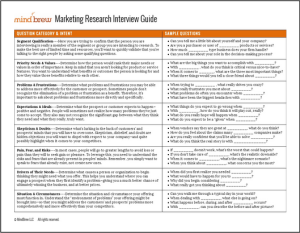There’s a certain segment of the population (many of them male) that believe any problem can be fixed with duct tape.
Have a leaky pipe? Cover it with duct tape.
Break your eyeglasses? Put them back together with duct tape.
Have a hole in your sofa? Duct tape to the rescue.
Need a dress for the prom? You guessed it, duct tape.
We’ve probably all used duct tape at one point or another as a short-term fix. But if you really want to fix a problem in a way that will last, you need to get down to the root cause of the issue and address it. If you really want to fix that pipe or those eyeglasses or that sofa for good, you’re probably going to need to tighten that pipe or buy some new eyeglass frames or recover your sofa with actual fabric. (And no, we don’t want to speculate on the root cause that makes people create formal wear out of tape.)
When it comes to sales performance issues, companies often resort to the equivalent of duct tape. Instead of getting to the heart of a problem, they slap on a quick fix that doesn’t really get to the core of the matter. For example, if they aren’t generating enough leads, they might increase the advertising budget. If their margins are shrinking, maybe they increase their list prices. If they are losing customers to a competitor, perhaps they’ll put a price-match guarantee in place.
Will those approaches work? Maybe. Maybe not. No one really knows because no one has any idea what really caused the problem. And no one has taken the time to investigate the root cause because they think it will take too much time or they don’t know how or they think that the issue is so complicated they could never find the root.
The truth is, it’s usually a lot easier to find the root cause of a sales problem than most people think. We recommend a very simple process called the “Five Whys.”
In essence, this process involves asking, “Why?” five times. And by the end, the person doing the investigating usually has a pretty good understanding of the ultimate root cause for a problem.
How does that play out in the real world?
Imagine a situation where a sales ops team uncovers the fact that the company is generating really poor margins on its largest deals. The first step in the process is to ask why that is happening. A quick look at the data and a couple of conversations with the sales team reveals that they are almost always giving in when customers demand a discount on big orders.
Step two in the process is to again ask why—in this case, why are the salespeople giving in? In further conversations with the sales team, it comes out that they are afraid customers will walk away from the deal if they don’t offer the discount, and that would mean no commission for the rep. Some simple math reveals that on a big deal, it is much more profitable for the salesperson to accept a lower price, even though that might not be best for the company’s bottom line.
Step three: ask why again. Why is it more profitable for the salesperson to give in than to insist on the higher price? In this case, the answer is obvious—that’s the way the sales comp plan is structured.
The next why is a bit trickier to answer. Why is the sales comp plan structured the way it is? Discussions with management reveal that no one has really considered the structure of the sales plan in a long, long time. In fact, it’s been in place since 1975, and now, it’s just the way it’s always been.
At this point, it’s obvious that any solution to this problem is going to involve revamping the sales comp plan and probably some negotiation training, but it’s still worthwhile to ask that fifth and final why: Why hasn’t anyone revamped the sales comp structure in more than forty years? The answer is that no one thought it was a problem. The sales team was happy with it, and no one in management wanted to rock the boat because they had no idea the margins on big deals were so bad.
Now that we’ve uncovered all of the root causes for the problem, it’s obvious that sales ops isn’t just going to need to look at the commission schedule and training program, they are also going to need to convince everyone else that a problem exists. They’re going to need to apply some change management techniques in order to accomplish their ultimate goal of improving margins on large deals.
This Five Whys technique is remarkably effective at helping companies get to the true root causes of problems and solve them. For more details and a few more examples, check out the webinar Diagnosing Sales Problems. And the next time you’re tempted to slap on a quick “duct tape” fix to a problem, give this technique a try. You’ll probably be surprised by how easy and helpful it can be.











